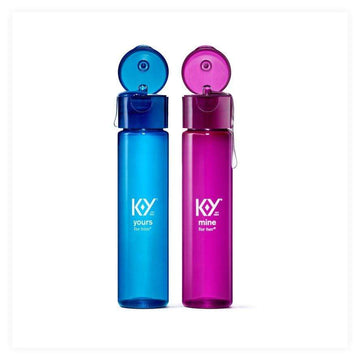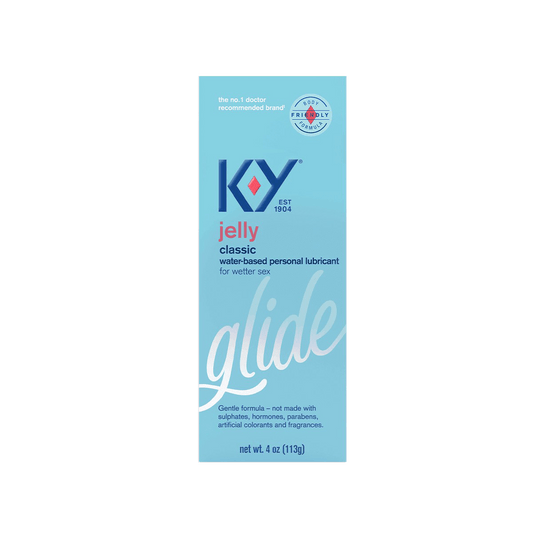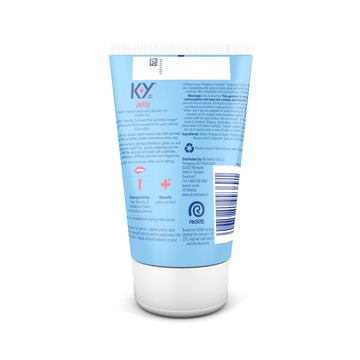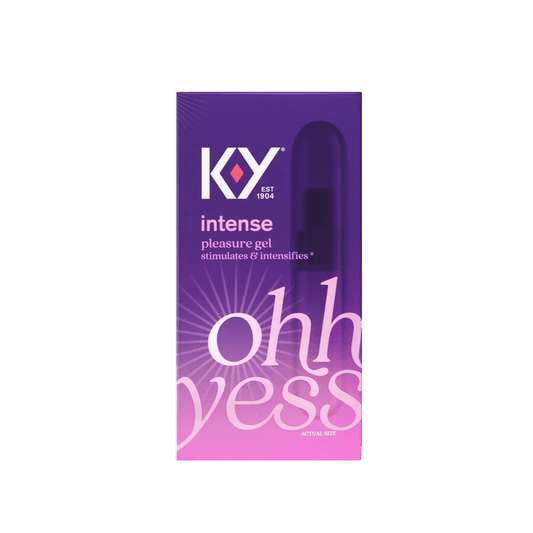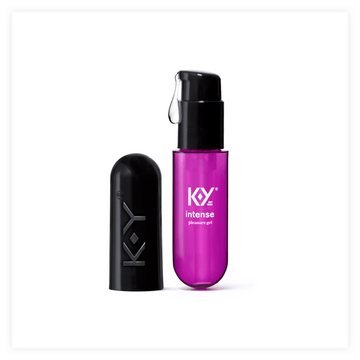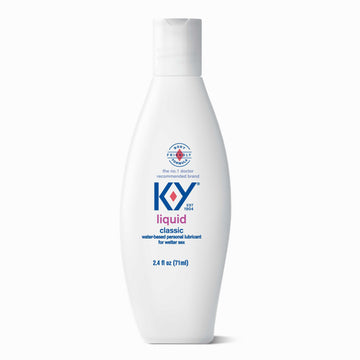What Is Squirting? Everything You Need to Know
Reader’s Note: Squirting is one of the most mysterious and misunderstood parts of the female sexual experience. Not all women or people with vaginas report squirting, but for those who do, they report increased pleasure as a result. This guide has everything you need to know!
Squirting might be something that you think only happens in pornographic movies, but it is actually a common phenomenon that can happen to women when they are turned on. Otherwise known as female ejaculation, it can occur before, during, and after orgasm, and is characterized by the dispersal of a colorless, water-like fluid.
The phenomenon is not as well studied as the male orgasm but it is estimated that around 40% of women report having squirted in their lifetime with nearly 30% of that group experiencing it over 11 times1. Additionally, 28.1% of this same group report orgasming at the same time, making it something worth learning more about, whether you have a vagina, or have sex regularly with people with vaginas.
In this guide, we will talk about:
- Understanding Squirting
- The Science Behind Squirting
- Female Squirting and Its Variations
- Tips for Experiencing Squirting
-
Common Myths About Squirting
- Safety Tips When Experimenting with Squirting
- Conclusion
Understanding Squirting
If you are a woman or have a vagina and you are interested in squirting, especially in tandem with having a mind-melting orgasm, or your partner is a woman and you want them to experience a new level of sexual pleasure, then it’s worth understanding how squirting works, how it’s different from female ejaculation and/or incontinence, and the science behind it. After we discuss the technical points, we will guide you through how to attempt squirting on your own.
What Is Squirting?
Squirting is still an understudied field, but it is loosely defined as the expulsion of various quantities of clear liquid from the urethra, usually when you orgasm or are feeling a high level of arousal. While there are still debates about what precisely is in squirting fluid, current research suggests that it is a mixture of urine and prostate-specific antigens.2 The amount of fluid spans from 0.3 ml to 150 ml.3
How Is Squirting Different from Female Ejaculation and Incontinence?
To understand squirting properly, it’s important to see how it's different from female ejaculation(FE) and incontinence. It’s worth clearing up a misconception about FE, as it is not the same as male ejaculation, something that almost always accompanies male orgasm. In fact, according to a recent review of the research in Clinical Anatomy, the mechanisms between squirting and FE are quite different. They write that while “SQ is a massive transurethral orgasmic expulsion from the urinary bladder… FE is the secretion of a very small amount of fluid from the paraurethral glands4.” Incontinence is another thing entirely, which is known as the complete lack of control over urinary and defecatory functions. While squirting can also accompany a loss of control, it is specifically related to sex and not general toiletry functions.
The Science Behind Squirting
The history of squirting is a debated, questioned, and provocative field, with only a silver of the research that has been dedicated to male ejaculation5. People still don’t know for sure why women squirt. What the majority of scientists can agree on is that it is the dispelling of fluids during sex, although people disagree as to whether it’s an orgasmic experience comparable to male ejaculation or simply the involuntary emission of pee. This may come down to the storage of fluid in the Skene’s glands, otherwise known as the female prostate, although some scientists say that’s more related to female ejaculation. Regardless, squirting is always accompanied by some stimulation, however, such as masturbation, penetration, and cunnilingus; it can also be stimulated by toys.
Why Do Some Women Squirt?
Unlike male ejaculation, which almost all men can achieve and is accompanied by the dispelment of semen, squirting is something only 40% of women have reported1. While it is likely that the number of women who can squirt is probably higher, there are reports of women who have tried to squirt and cannot succeed. Currently, the reasons why are not clear6 but it may have something to do with the amount of liquid stored in the Skene’s gland.
Is Squirting an Orgasm?
Squirting on its own is not an orgasm, but because it often accompanies an orgasm, it is associated with higher sexual pleasure. While some women report squirting to be a “superpower”5 that feels more powerful than having an orgasm without one, others say that it is more or less the same. Whatever squirting exactly is, it is certainly a new sensation for many women, especially when it occurs for the first time, and it’s definitely something worth trying, either at home or with your partner, as it could lead to having better orgasms.
Female Squirting and Its Variations
What happens when a woman squirts: Female squirting, as it is commonly understood, is a sharp emission of fluid from the vagina that spurts out in a sudden manner. But there are actually two different types of female emission. As mentioned before, squirting is the dispelling of urine and other substances that make it look like a woman has wet the bed, whereas female ejaculate is a milky white fluid that may come from the Skene glands6.
Can Men Squirt?
Men can squirt! It is activated in a similar way to female squirting, where urine in the bladder gushes out from the urethra orifice7. A case from Japan reports on a 25-year-old male volunteer who was stimulated 20 seconds after normal ejaculation before emitting translucent milky fluids for 60 seconds. Thanks to color Doppler ultrasonography, they could record strong contractions of the prostate and striated muscles. But this remains a pretty understudied field, so it’s certainly worth watching this space for development in the future.
The Role of Skene’s Glands in Squirting
The Skene’s glands are two glands located at the bottom of the urethra, and they are surrounded by tissues that swell with blood during sexual arousal. During orgasm, they secrete a fluid, which is known as female ejaculate. Scientists postulate, yet it has not been definitely agreed upon, or proven, that the Skene’s glands might also be responsible for squirting2. The hope is that when you revisit this article in a few years, we might be able to come back with some definitive answers.
Tips for Experiencing Squirting
Now that you have learned all about the complex (and often contradictory) science behind squirting, and its differences from female ejaculation, you probably want to know what all the fuss is about. The good news is that if you are willing to learn more about squirting, then you are in the right place because we are about to share our knowledge about how to experience squirting during sex and the best practices to achieve it.
How to Squirt During Sex
Learning how to squirt during sex is hard to quantify, because, unlike, for example, a clitoral orgasm — which involves pretty straightforward rubbing of the clitoral gland — there is no one-size-fits-all way to make a woman squirt. For some, it comes absolutely naturally as they start, or it can come through lots of experimentation. With that said, it usually comes through g-spot stimulation or a mixture of g-spot stimulation and clitoral rubbing. Additionally, it’s never a bad idea to strengthen your pelvic muscles before you get started.
Best Practices for Exploring Squirting
When you decide to explore squirting, either alone or with your partner, the first thing is to be prepared for the mess. If you have just changed your sheets into nice and fresh covers, perhaps consider putting a bunch of towels or kitchen paper down, so you know that you won’t spoil it.
Once that is sorted, it makes sense to lie down, relax, breathe, and let your partner do their work. The way each woman achieves the ability to squirt is different, so simply experiment with yourself and your partner until you find your sexy pressure points.
Common Myths About Squirting
Squirting, like many parts of the female sexual experience, is a phenomenon that is riddled with many myths. Let’s clear up some of the biggest misconceptions:
- Squirting is a myth: It is a real phenomenon, just one that needs more research.
- Everyone can squirt using the same method: False. Squirting is all about your independent needs.
- Squirting soaks the sheets: This is true in porn, but real life might only give you a small sprinkle.
- Squirting is just peeing: While squirt definitely has urine in it, it still contains a variety of other components, such as prostate-specific antigens.
- Squirting only happens during orgasm: Squirting can happen during orgasm. But it can also happen before and after. It depends on the person.
Safety Tips When Experimenting with Squirting
There is nothing inherently dangerous about squirting, which is a normal byproduct of sexual excitement. With that said, if you are hyperfocused on achieving squirting and have too much sex, or the sex is too rigorous, whether masturbating or with a partner, then this can hurt your vagina and your clitoris. As always, be gentle, and make sure to use plenty of lube.
With that said, if your partner is giving you cunnilingus and you feel like the squirt is about to come on, and you know that this is something that wouldn’t please them, give them a heads up, either vocally or by tapping their head. That way, they can get out of the way in time.
Understanding Fluid Composition and Hygiene
Squirting fluid is a mixture of urine and prostate-specific antigens, and has been known to also contain glucose and fructose.
Conclusion
After reading our guide about female squirting, you should have a better idea about what it is and how it can have an impact on your sex life, as well as the many misconceptions and misunderstandings the average person might have about it. If you are a woman and still haven’t managed to squirt, then there is no need to worry. It might be that it just won’t happen to you, and that’s OK too! But if you can squirt, then follow our tips to explore it to the best of your ability and see how it can enlarge your sex life.
References
- The Journal of Sex Research, 2023, Vaginal Squirting: Experiences, Discoveries, and Strategies in a U.S. Probability Sample of Women Ages 18-93
- National Institute of Health, 2022, Enhanced visualization of female squirting
- Science Direct, 2015, Nature and Origin of “Squirting” in Female Sexuality
- National Institute of Health, 2022, Female ejaculation and squirting as similar but completely different phenomena: A narrative review of current research
- Sage Journals, 2021, A sexual superpower or a shame? Women’s diverging experiences of squirting/female ejaculation in Sweden
- New Scientist, 2015, Female ejaculation comes in two forms, scientists find




